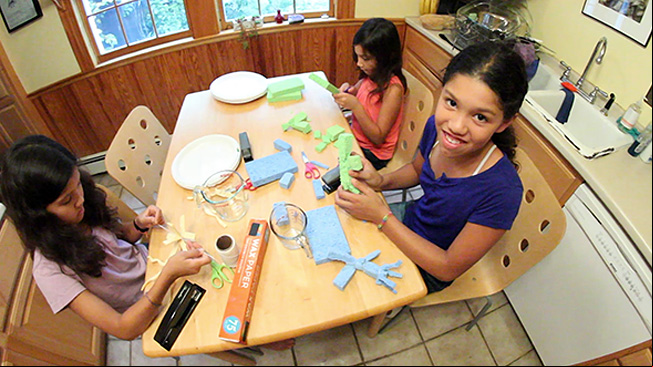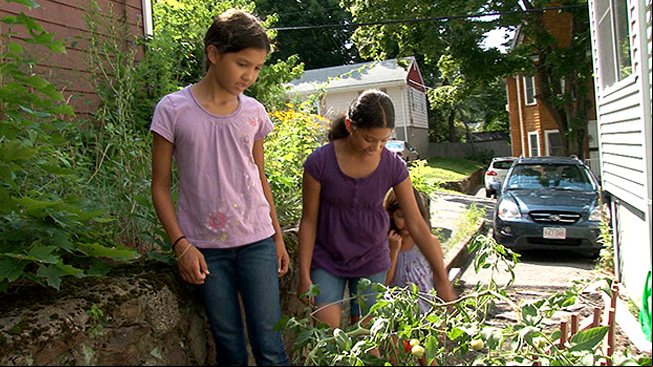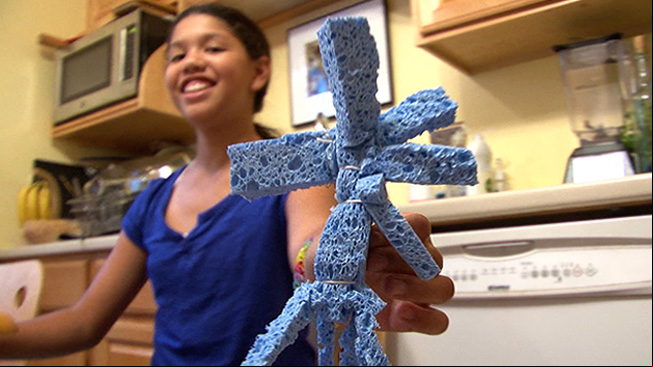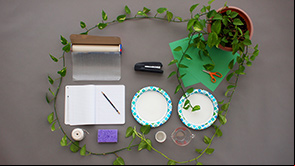Roots and Shoots 5u4i48

What Is This Activity? 1246j
Can a plant pour itself a glass of water whenever it gets thirsty? Nope! Plants rely on their roots, stems, and leaves to take up and store water from the environment. In this modeling activity, see how different traits, such as leaf thickness and a protective waxy coating, help plants store water and keep from drying out. 63544z
Introduction 591p71
-
00:00
What Are Kids Learning? 3a2y4p
- All living things need water to survive. The absence or presence of water in an ecosystem determines what can live there.
- Water is a limited resource.
- Plants parts, including roots, stems, leaves, flowers, and fruit, help them survive and grow.
- All plants have a waxy outer coating called the cuticle. It covers the plant's surface and helps prevent water loss
Activity 60 minutes 2g482t

Part A In Search of Plants 3w1463
- Head outside to look closely at a few plants, such as dandelions, grass, flowers, or vegetable plants.
- Ask questions like: "I wonder how this plant gets water?" or "What might happen to this plant if it didn't rain for a week?"
- Gently pull up a plant. Talk about how plants take in water from the soil through their roots. Water travels from the roots up the stem and to the plant's leaves.
TIP: If you have succulent houseplants, such as aloe, cacti, or jade, compare them to dandelions or garden plants. Many succulents need less water than other kinds of plants. Their thick leaves and stems store water.

Part B Brainstorm and Build! wd3m
- Head back inside. Show your child the materials and ask how you could use them to build model plants that take up and store water.
- Build! Include the three main parts of a plant: roots, stems, and leaves. Help your child cut out leaf or petal shapes from sponges or paper towels.
- Use the waxed paper to model the cuticle, a waxy coating that helps plants prevent water loss. Use staples or string to hold parts together; tape will not hold when you pour water on the model plants.
- Make comparisons. Ask questions like: "Which will hold onto water longer: thick leaves or thin ones?" or "What difference does it make if a plant has a waxy coating?"
TIP: There is no one "right" way to design these plants. Let your child experiment! The point is to compare how different features affect how a plant holds water.
Part C Make It Rain 5d6u1o
- Stand the model plants on a plate.
- Pour about 1/4 cup of water on the plate. Watch the water. Where does it go?
- Remove the plants from the wet plate and place them on a countertop where they won't be disturbed.
- After several hours, or even overnight, revisit the plants. Did they change? How? What would happen if you built an identical plant, but you didn't coat it with waxed paper? Give it a try! What if you built a plant that looks different–taller, shorter, fatter, or has a different shape? Give it a try!
Explore Some More 736219
Plants in the Produce Aisle 4t1b2o
Compare the water-holding abilities of different plant parts using produce from the grocery store. What happens if you pluck a basil or lettuce leaf and leave it sitting on the counter overnight? What if you did the same with an aloe or artichoke leaf? Try to figure out which part of a plant–root, stem, leaf, or flower–a piece of produce is. You might be surprised to learn that the nodules on a head of broccoli are actually flower buds!
Roots Everywhere 146ty
Talk about how the plants you see every day–grass, trees along the sidewalk, weeds growing along roadsides–get the water they need. Could there even be roots growing under the sidewalks you walk on? You might find tree roots there. A tree's roots often extend as far out as its canopy. Take some chalk and mark out how far the roots of a tree might extend under the sidewalk.


